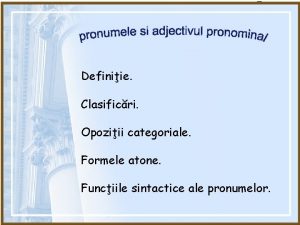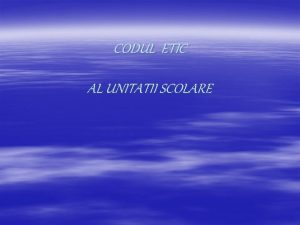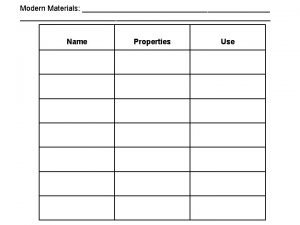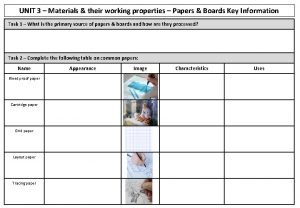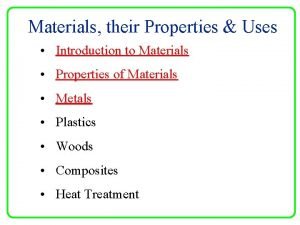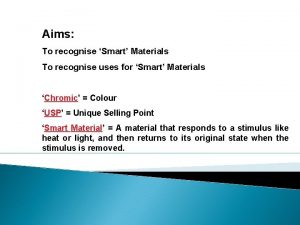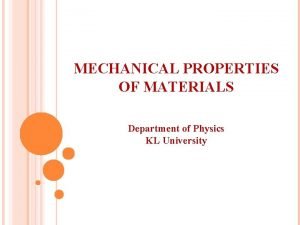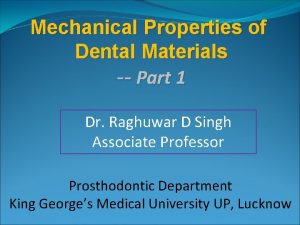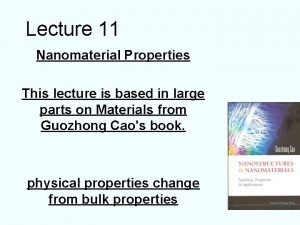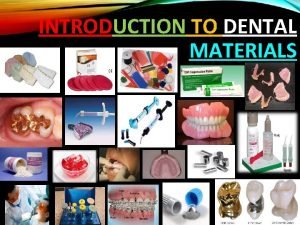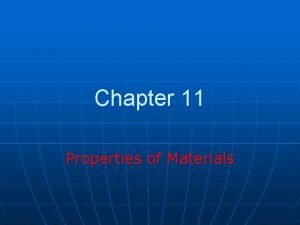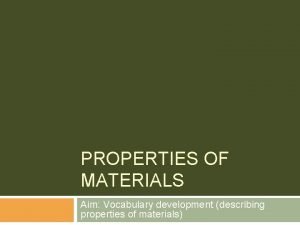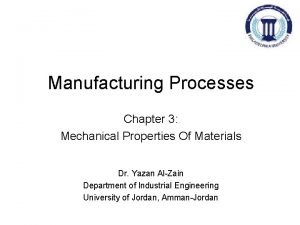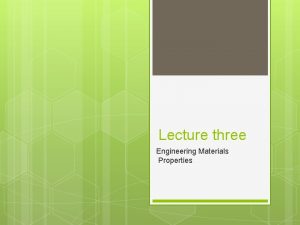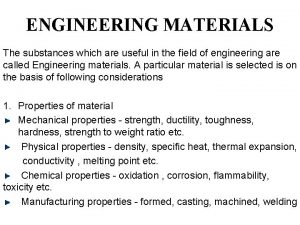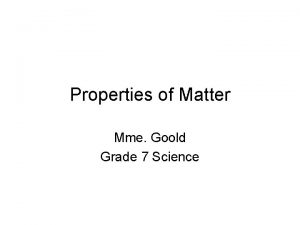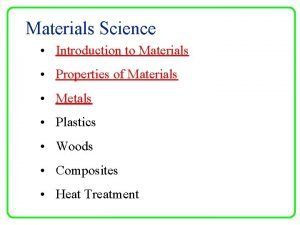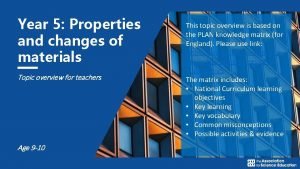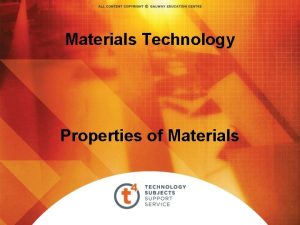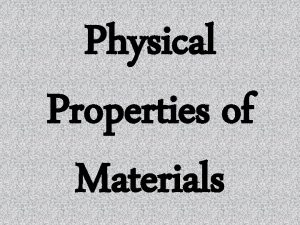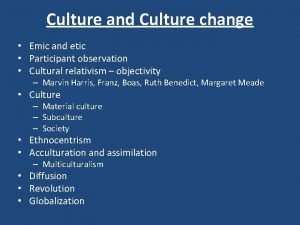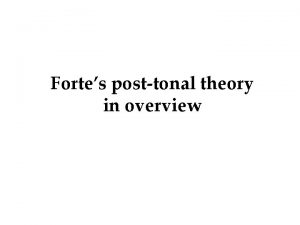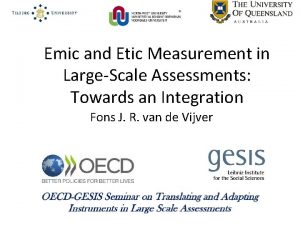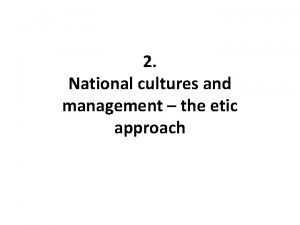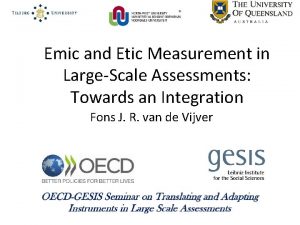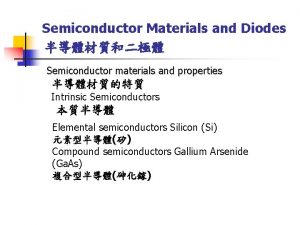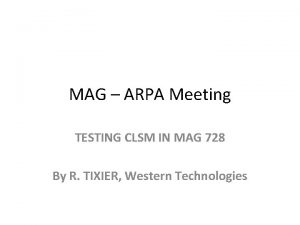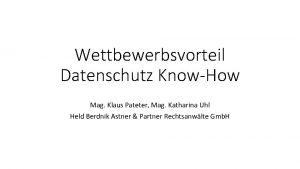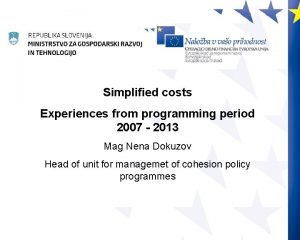1 The properties of mag etic materials and

































- Slides: 33

1 The properties of mag etic materials and its Applications Dr. Naglaa Abdel All Assistant Professor Imam University

2 THE WORLD OF MAG ETS

3 What is Magnetism? Magnetism is the force of attraction or repulsion of a magnetic material due to the arrangement of its atoms, particularly its electrons. MAGNETS HAVE Positive 2 POLES Negative

Magnetic Poles

5 A MAGNETIC FIELD IS… …THE AREA AROUND MAGNET …WHERE IT CAN ATTRACT OR REPEL THINGS

ü OPPOSITES ATTRACT (THEY “HOLD HANDS”) ü LIKES REPEL (THEY “IGNORE EACH OTHER” 6

MAGNETS CAN PULL THROUGH GASES 7 …AND LIQUIDS

SOME MAGNETS CAN PULL THROUGH SOLIDS… 8

9 WHAT KINDS OF THINGS ARE MAGNETIC? LETS FIND OUT!

10 USING A , WALK AROUND THE ROOM AND FIND DIFFERENT THINGS THAT ARE MAGNETIC! IF THEY ARE MAGNETIC, THEY WILL STICK TO THE MAGNET

11 MAGNETIZATION IN MATERIALS READY SET… GO!

MAGNETIZATION IN MATERIALS Electron orbiting around the nucleus Magnetic Moments of Atoms ü Orbital magnetic moment ü Spin magnetic moments Both of these electronic motions produce internal magnetic fields B. 12

Magnetization • Magnetization refers to the process of converting a non-magnetic material into a Magnetic material. • The intensity of Magnetization is directly related to the applied field H.

Magnets – how do they work? Just what is happening inside the magnet to make it magnetic? N S 14

Magnets – how do they work? We need to look closely at what is happening to the particles (electrons) inside the magnet. Just what is happening inside the magnet to make it magnetic? N S 15

Magnets – how do they work? We need to look closely at what is happening to the particles (electrons) inside the magnet. Just what is happening inside the magnet to make it magnetic? N S In an unmagnetized material, the tiny electrons, or atomic magnets point in random directions. 16

Magnets – how do they work? We need to look closely at what is happening to the particles (electrons) inside the magnet. Just what is happening inside the magnet to make it magnetic? N S When the material becomes magnetized, more and more of the tiny atomic magnets line up with each other. They act as one BIG magnet. 17

Magnets – how do they work? We need to look closely at what is happening to the particles (electrons) inside the magnet. Just what is happening inside the magnet to make it magnetic? N S If a magnet is hit with a hammer, the tiny atomic magnets get thrown out of line again, so the material becomes demagnetised. 18

Magnets – how do they work? We need to look closely at what is happening to the particles (electrons) inside the magnet. Just what is happening inside the magnet to make it magnetic? N S If a magnet is heated to high temperature, the tiny atomic magnets get thrown out of line again, so the material becomes demagnetised. Temperature 19

Classification of Magnetic Materials 1. 2. 3. 4. 5. Dia … Para … Ferro … Anti Ferro … Ferri … materials. Magnetic 20

1. Diamagnetic materials is a substance which create a magnetic field in opposite to an externally applied field. 21 Diamagnetic • Always present, even when there are no permanent dipole moments on the atoms. • They repel the lines of force slightly. • Susceptibility is : ü negative (-10− 6 to -10− 5) ü Independent of temperature The examples : Bismuth, silver, copper and hydrogen. H

2. Paramagnetic materials is a substance which very weakly attracted by the poles of a magnet, but not retaining any permanent magnetism. 22 paramagnetic The properties of paramagnetic susceptibility ü Positive (Typically 10− 5 to 10− 3) ü Temperature-dependent ü Saturates for large B or low T • They attract the lines of forces weakly. Examples: Al, Pt, Ca, O 2 are such materials. H

3. Ferromagnetic materials • A type of material that is highly attracted to magnets. 23 Ferromagnetic • A ferromagnetic materials has a spontaneous magnetic moment. • have high susceptibility. • Magnetic saturation. ü Temperature-dependent Ferromagnetic materials are made up of many regions in which the magnetic fields of atoms are aligned. [magnetic domains] Examples: Fe, Co, Ni, Cr, Mn are such materials. H=0

Hysteresis Loop 24 Magnetization measured as a function of applied magnetic field for a ferromagnetic material. Soft magnetic materials Hard magnetic materia This property is called Hysteresis

Effect of the applied magnetic field Figure (1): Ferromagnetic particles under the influence of an external magnetic field. Figure (2): Ferromagnetic particles in absence of an external magnetic field. 25

CURIE TEMPERATURE (TC) • The Curie temperature Tc, is the temperature above which the spontaneous magnetization of ferromagnetic materials are vanishes. For : • T > TC paramagnetism • T < TC ferromagnetism • Note that the exchange field will become stronger as temperature is lowered, 26

4. Ferrimagnetism 27 The ferrimagnetism will give rise to spontaneous magnetisation then ordering occurs at T < Tc. Example: Magnetite (Fe 3 O 4) At low temperatures: N(0) is much smaller than that by considering Fe 3 O 4 as ferromagnetic.

5. Anti. Ferromagnetism • The antiferromagnetism will not produce any magneisation because of the two opposing spin components. • When we applied external field, the net magnetization will be different of zero due to that the maximum of spin are in the same direction. • Antiferromagnetism is a special case of ferrimagnetism. • Neel temperature (TN) is the critical temperature for the antiferromagnetic materials 28

Effect of Temperature Figure (2): Effect of temperature on magnetic materials. 29

30 • APPLICATIONS : • Ferromagnetic materials are used in magnetic recording devices, such as for cassette tapes, floppy discs for computers, and the magnetic stripe on the back of credit cards. • Diamagnetic materials are used for magnetic levitation, where an object will be made to float in are above a strong magnet.

31 • Magnetic soft materials: are used in making electromagnets and these electromagnets are used in telephone receiver, bells, loud speakers etc. • Magnetic hard materials: are used in making permanent magnets.

32 Applications of magnetic domains

33 THE END… THANK YOU
 Mag etic
Mag etic Emic perspective
Emic perspective Dativul etic
Dativul etic Educatia este arta de a face omul etic
Educatia este arta de a face omul etic Etic moral
Etic moral Emic vs etic
Emic vs etic Endoculturación
Endoculturación Cant stop the feeling go noodle
Cant stop the feeling go noodle What is harmful and useful
What is harmful and useful Natural man made
Natural man made Adopting materials
Adopting materials Properties of dental materials
Properties of dental materials Stomatex fabric
Stomatex fabric Unit 3 materials and their working properties
Unit 3 materials and their working properties Malleability and ductility
Malleability and ductility Grade 6 natural science matter and materials
Grade 6 natural science matter and materials Properties of smart and modern materials
Properties of smart and modern materials Direct materials budget with multiple materials
Direct materials budget with multiple materials What is intensive in chemistry
What is intensive in chemistry Physical properties and chemical properties
Physical properties and chemical properties Ductility
Ductility Proportional limit in dentistry
Proportional limit in dentistry Hardness of nanomaterials
Hardness of nanomaterials Auxiliary dental material
Auxiliary dental material Properties of materials examples
Properties of materials examples Properties of materials vocabulary
Properties of materials vocabulary Manufacturing property of a material
Manufacturing property of a material Manufacturing properties of materials
Manufacturing properties of materials Optical properties of engineering materials
Optical properties of engineering materials What is the engineering materials
What is the engineering materials Properties of materials grade 7
Properties of materials grade 7 Technology grade 7 term 2 notes
Technology grade 7 term 2 notes Properties of materials examples
Properties of materials examples 5 properties of materials
5 properties of materials


